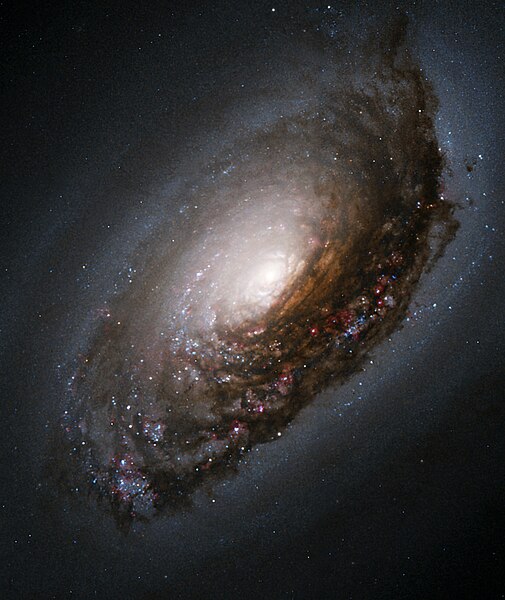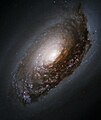پرونده:Blackeyegalaxy.jpg

این پیش-پیش سِراق هدائن ِقایده: ۵۰۵ × ۶۰۰ پیکسل. دیگه کیفیتون: ۲۰۲ × ۲۴۰ پیکسل | ۴۰۴ × ۴۸۰ پیکسل | ۸۹۷ × ۱٬۰۶۵ پیکسل.
اصلی پرونده (۸۹۷ × ۱٬۰۶۵ پـیـکـسهل, فـایـل گـأتـی: ۷۷۴ کیلوبایت, MIME مـونـد: image/jpeg)
فایل تاریخچه
تاریخ/زمونها سَر کلیک هاکنین تا اون گادِر ِنسخه ره هارشین.
| تاریخ/زمون | انگوس گتی | ابعاد | کارور | هارشا | |
|---|---|---|---|---|---|
| إسا | ۲ جـون ۲۰۰۵، ساعت ۰۹:۴۶ |  | ۸۹۷ در ۱٬۰۶۵ (۷۷۴ کیلوبایت) | CWitte | This image of M64 was taken with Hubble's Wide Field Planetary Camera 2 (WFPC2). The color image is a composite prepared by the Hubble Heritage Team from pictures taken through four different color filters. These filters isolate blue and near-infrared lig |
پروندهی استفاده بیّن
این 2 صفحهئون لینک هِدانه این فایل ره:
پروندهی ِهمه جایی استفاده بییین
این ویکیون هم این پرونده جه استفاده کانّه:
- کاربرد af.wikipedia.org دله
- کاربرد ar.wikipedia.org دله
- کاربرد ast.wikipedia.org دله
- کاربرد az.wikipedia.org دله
- کاربرد be.wikipedia.org دله
- کاربرد bg.wikipedia.org دله
- کاربرد bn.wikipedia.org دله
- کاربرد br.wikipedia.org دله
- کاربرد bs.wikipedia.org دله
- کاربرد ca.wikipedia.org دله
- کاربرد ce.wikipedia.org دله
- کاربرد ckb.wikipedia.org دله
- کاربرد co.wikipedia.org دله
- کاربرد cs.wikipedia.org دله
- کاربرد cy.wikipedia.org دله
- کاربرد de.wikipedia.org دله
- کاربرد diq.wikipedia.org دله
- کاربرد el.wikipedia.org دله
- کاربرد en.wikipedia.org دله
- Messier object
- Coma Berenices
- List of galaxies
- Portal:Astronomy/Picture/May 2005
- Portal:Astronomy/Picture/12 May 2005
- Portal:Astronomy/Picture/Week 48 2005
- User:ComaDivine
- User:Superfo
- User:Gilgamesh~enwiki/Favorite images
- List of spiral galaxies
- Portal:Solar System
- Portal:Solar System/WikiProjects
- User:Passargea/Favourite pictures/Space
- User:Logos/Hall of Galaxies
- User talk:Example/Archives/2008/April
- User:Mike YuHong Chen
- User:Stefania.deluca/sandbox
سراسری استفادهئون ره این پرونده جه سِراق هاده.
